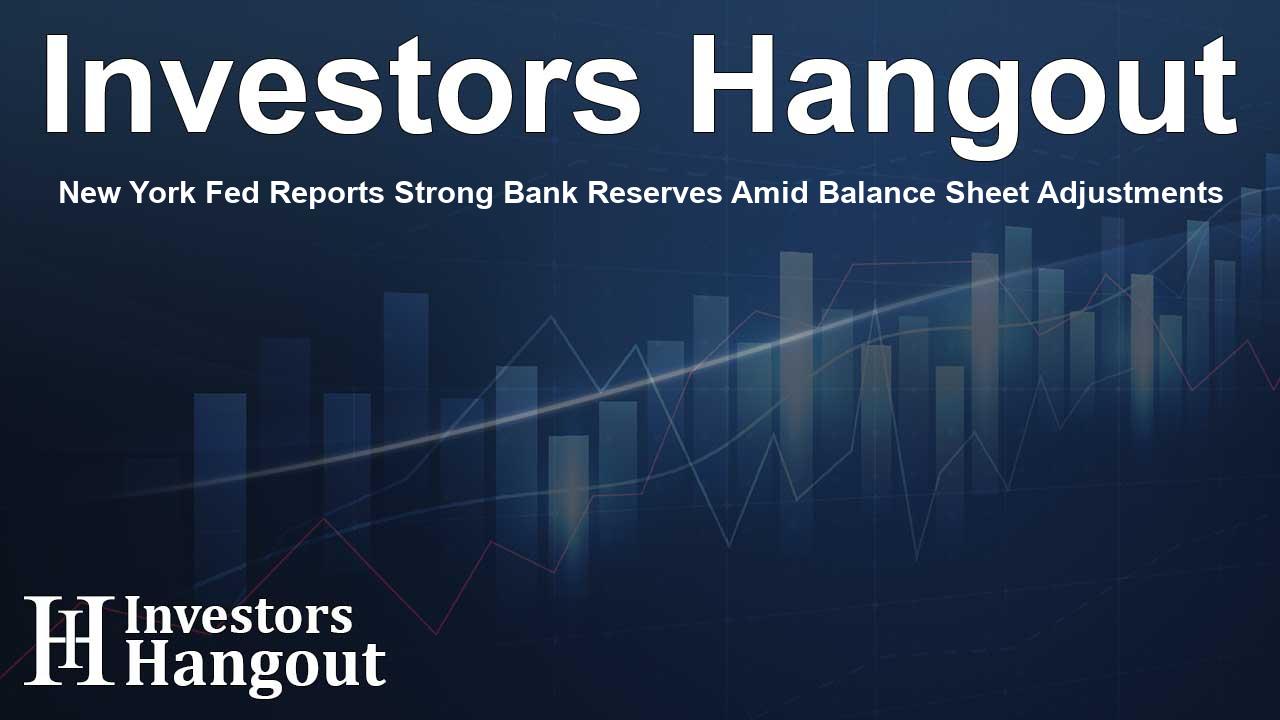New York Fed Reports Strong Bank Reserves Amid Balance Sheet Adjustments

Robust Bank Reserves Indicate Stability for the New York Fed
Recent findings from the New York Federal Reserve indicate that the central bank is well-positioned to continue its strategy of reducing the size of its balance sheet. This information is critical as it highlights the health of the banking system during a period of significant monetary policy adjustments.
Understanding the Reserve Demand Elasticity Measure
The Reserve Demand Elasticity Measure released by the New York Fed showcases that the 50th percentile reading was at -0.15 as of mid-November. This figure has remained consistent when compared to previous data from the previous month. As noted in the Fed's report, reserves are described as being "abundant," a reassuring signal for analysts and market participants alike.
What is the Reserve Demand Elasticity Measure?
This index serves as a crucial tool for gauging market liquidity conditions. It was made public just weeks ago and is designed to reflect how robust or constrained bank reserves currently are. A reading leaning into negative territory could indicate tightening reserves, which directly relates to the Fed’s quantitative tightening strategies.
The Impact of Quantitative Tightening
Over the course of more than two years, the Federal Reserve has actively been liquidating its bond holdings to return to a normalized balance sheet size. The balance sheet, once peaking at around $9 trillion in the summer of 2022, has recently adjusted to approximately $7 trillion. This shrinkage is part of the Fed’s broader goal to reduce liquidity, permitting the federal funds rate to operate effectively within its target range and facilitating customary market fluctuations.
Challenges in Liquidity Removal
It remains a significant concern how far the Fed can go in withdrawing liquidity without triggering instability in the financial markets. The recent indication from the New York Fed's measure suggests that there is no urgent requirement to halt these liquidity reduction efforts just yet, which aligns with the views expressed by various central bank officials. Expectations within the markets also seem to converge on the notion that an end to quantitative tightening may occur in the upcoming year.
Historical Context of the New York Fed Measure
The New York Fed's measure of reserves is known to lead in signaling forthcoming periods of low reserves. This historical trend highlights that increasingly negative results on the index might prompt the Fed to adjust its approach to quantitative tightening effectively. For context, the last significant reserve tightening cycle began in October 2017 and reached a critical point in October 2019 when an unexpected liquidity crunch compelled the Fed to inject funds into the markets decisively to stabilize the federal funds rate.
Looking Ahead
As analysts process this new data, they remain focused on how these developments will unfold in the context of ongoing economic conditions. The New York Fed’s indications of strong bank reserves provide a hopeful perspective as the central bank navigates important monetary policy decisions.
Frequently Asked Questions
What does the New York Fed's measure indicate about bank reserves?
The New York Fed's measure indicates that bank reserves are currently abundant, suggesting a stable banking environment.
How does the Reserve Demand Elasticity Measure affect financial policies?
This measure helps the Fed assess market liquidity and determine how effectively it can manage monetary policies without risking tight liquidity conditions.
What was the initial goal behind quantitative tightening?
The primary aim of quantitative tightening is to reduce the Fed's balance sheet to a more normal level, thereby enabling better control of the federal funds rate and market volatility.
What challenges does the Fed face with liquidity removal?
The Fed must carefully gauge the extent to which it can remove liquidity to avoid destabilizing financial markets while still achieving its monetary policy targets.
What are market expectations regarding the future of quantitative tightening?
Current market expectations suggest that quantitative tightening may conclude in the coming year, depending on prevailing economic conditions.
About The Author
Contact Hannah Lewis privately here. Or send an email with ATTN: Hannah Lewis as the subject to contact@investorshangout.com.
About Investors Hangout
Investors Hangout is a leading online stock forum for financial discussion and learning, offering a wide range of free tools and resources. It draws in traders of all levels, who exchange market knowledge, investigate trading tactics, and keep an eye on industry developments in real time. Featuring financial articles, stock message boards, quotes, charts, company profiles, and live news updates. Through cooperative learning and a wealth of informational resources, it helps users from novices creating their first portfolios to experts honing their techniques. Join Investors Hangout today: https://investorshangout.com/
The content of this article is based on factual, publicly available information and does not represent legal, financial, or investment advice. Investors Hangout does not offer financial advice, and the author is not a licensed financial advisor. Consult a qualified advisor before making any financial or investment decisions based on this article. This article should not be considered advice to purchase, sell, or hold any securities or other investments. If any of the material provided here is inaccurate, please contact us for corrections.
